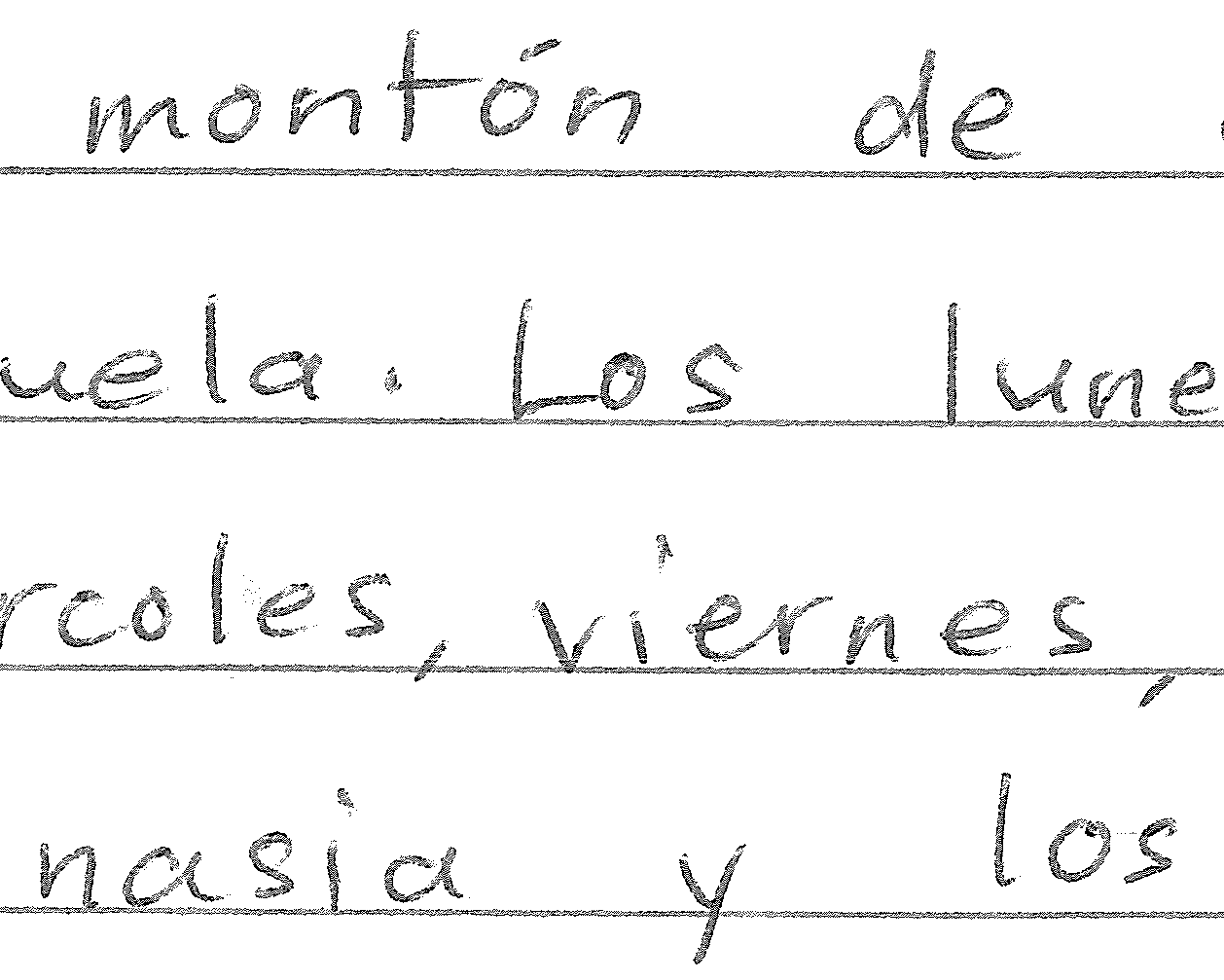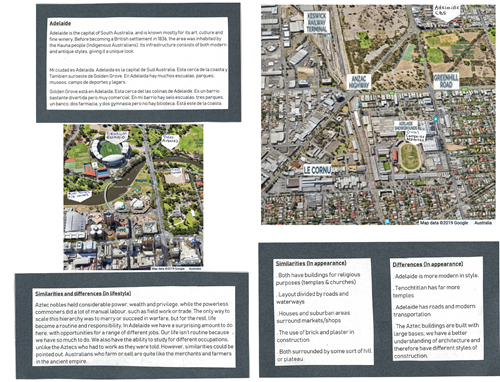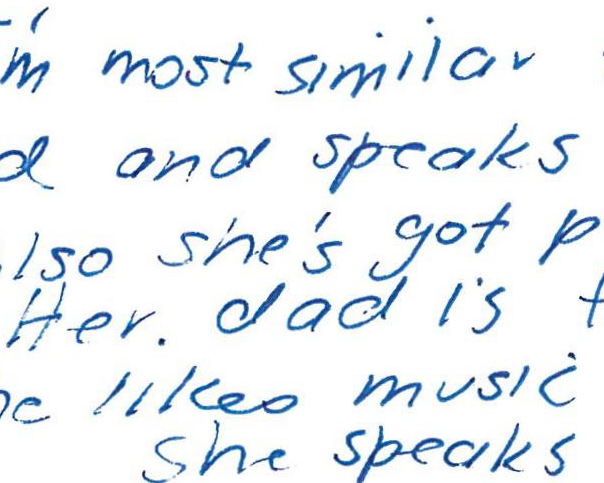Languages: Spanish - Satisfactory - Years 7 and 8 (Year 7 entry)
Portfolio summary
This portfolio of student work shows that the student shares information about their personal worlds (WS6), including personal details, family, friends, leisure activities (WS4), likes and dislikes (WS1, WS3, WS5). The student interacts with others (WS5) in shared activities, negotiations, games and events, using modelled language to ask and respond to familiar questions (WS5), give and respond to instructions, request help or permission and express opinions. When interacting, the student approximates Spanish sounds (WS4) and uses intonation to distinguish between statements, questions, exclamations and requests (WS5). The student obtains factual information and identifies key points from different sources, using non-verbal and contextual clues to help make meaning (WS8). The student describes characters (WS8), experiences and ideas using high-frequency vocabulary (WS6) and creates short informative and imaginative texts using modelled sentence structures and formulaic expressions (WS6). When constructing sentences, the student applies gender (WS1) and number agreement to definite and indefinite articles, nouns and adjectives (WS3, WS4, WS5, WS6). The student applies grammatical rules in relation to conjugation of verbs (WS1, WS3, WS4, WS5, WS6), and uses the two verbs for ‘to be’ (ser and estar) in modelled examples (WS1, WS3, WS5, WS6). The student applies Spanish writing conventions such as inverted question and exclamation marks (WS3, WS6). The student works in Spanish and English to translate texts (WS8) and create simple bilingual texts (WS6). The student describes their own experiences of using Spanish (WS2, WS7) and explains how aspects of their identity influence their intercultural exchanges.
The student identifies and applies rules for pronunciation and grammar (WS1, WS2, WS5, WS6, WS7) and uses metalanguage in Spanish to explain basic features of language, texts and grammar, making connections with terms such as ‘verb’, ‘adjective’, noun’ and ‘agreement’ that are used in English learning, and incorporates concepts such as grammatical gender (WS2, WS7). The student identifies the need to adjust language to suit different situations and relationships (WS3, WS7). The student describes the distribution of communities of Spanish speakers in different countries and regions and knows that Spanish is spoken in a variety of forms in different communities (WS2, WS6, WS7). The student identifies how languages and cultures change through contact (WS6) and gives examples of Spanish words used in English and words used in Spanish that are borrowed from other languages (WS2, WS7). The student identifies cultural aspects of language use that are reflected in everyday interactions such as emailing, text messaging, gift-giving and apologising (WS3, WS7).







